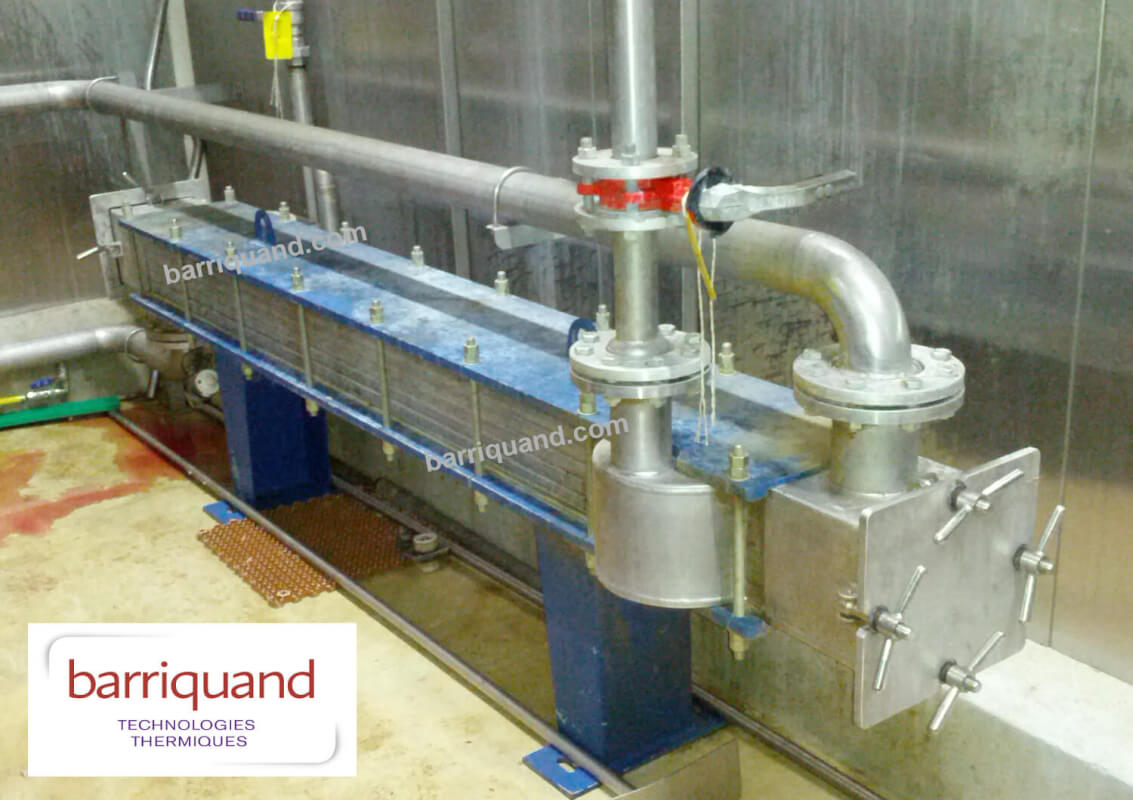[Case study] Food-processing : Platular® for porcine blanching in slaughterhouses.
An increase in production, energy saving and easier maintenance for this slaughterhouse in Doubs who chose the Barriquand Platular® heat exchanger to replace an existing installation on a pork blanching application.
[Case study] Food-processing: Platular® for porcine blanching in slaughterhouses.
An increase in production, energy saving and easier maintenance for this slaughterhouse in Doubs who chose the Barriquand Platular® heat exchanger to replace an existing installation on a pork blanching application.
An application of the porcine meat industrial sector
Practiced especially in porcine slaughterhouses, blanching is a process which consists in softening the pig’s leather to ease dehairing. This type of application can also be found in poultry slaughterhouses for plucking (with exception to geese and ducks).
Carcasses are plunged into a blanching tank (also called soaking tub or scalding tank), which contains hot water at a temperature that must absolutely be maintained at 60-62°C. This thermal stability is a vital part of the process and cannot tolerate variations above 1°C. In fact, if the temperature is too hot, the skin will tend to tear during depilation whereas if it is too cold it would make the dehairing process less effective.
Loaded water and a risk of important fouling
At our client’s slaughterhouse, the required temperature in the 12 m3 blanching tank was maintained by the direct injection of vapor via a steam-boiler.
The choice of the replacement technology was guided by the nature of the fluid. Indeed, the tank water is loaded with bristles and nails, which cause fouling as well as quickly clogging-up the heat exchanger. On this type of application, plate and gasket heat exchangers, including those with free flow channels, must be avoided, and the same goes for spiral type heat exchangers.
The Platular® welded plate heat exchanger developed and patented by Barriquand is particularly adapted to fluids loaded with suspended particles (solids or fibers). It reaches high levels of energy recovery together with a low temperature approach.Furthermore, in this case we decided to work in single pass flow arrangement. The blanching tank water is kept at the target temperature by a closed-loop hot water secondary circuit.

Economic savings
For our client, the capital investment amounted to a little less than 25 000 €.
Our Platular® heat exchanger was connected to a hot water storage tank instead of the existing steam-boiler, which saves energy and maintenance time.
With the initial installation, it took one hour to warm up the tank to the desired temperature. Now, the water heated by our Platular® heat exchanger is introduced directly into the blanching tank so that the client saves 1 hour of production daily. Moreover, the blanching tank closed circuit limits water consumption.
Entirely visitable and washable, the Platular® is also known for its easy upkeep. The client quickly cleans the unit once a week and ultimately wastes less time dedicated to maintenance.
On average and when taking into account all the project’s parameters (minimized heat loss, no more boiler maintenance, reduction of the time it takes to bring the tank up to temperature…) the operating costs are reduced by an estimated 25-30 % when compared with those of the previous installation. The Return On Investment (R.O.I.) timeframe is approximately 4 – 5 months.
A project of heat exchange or energy saving in food processing? PLEASE CONTACT US!

